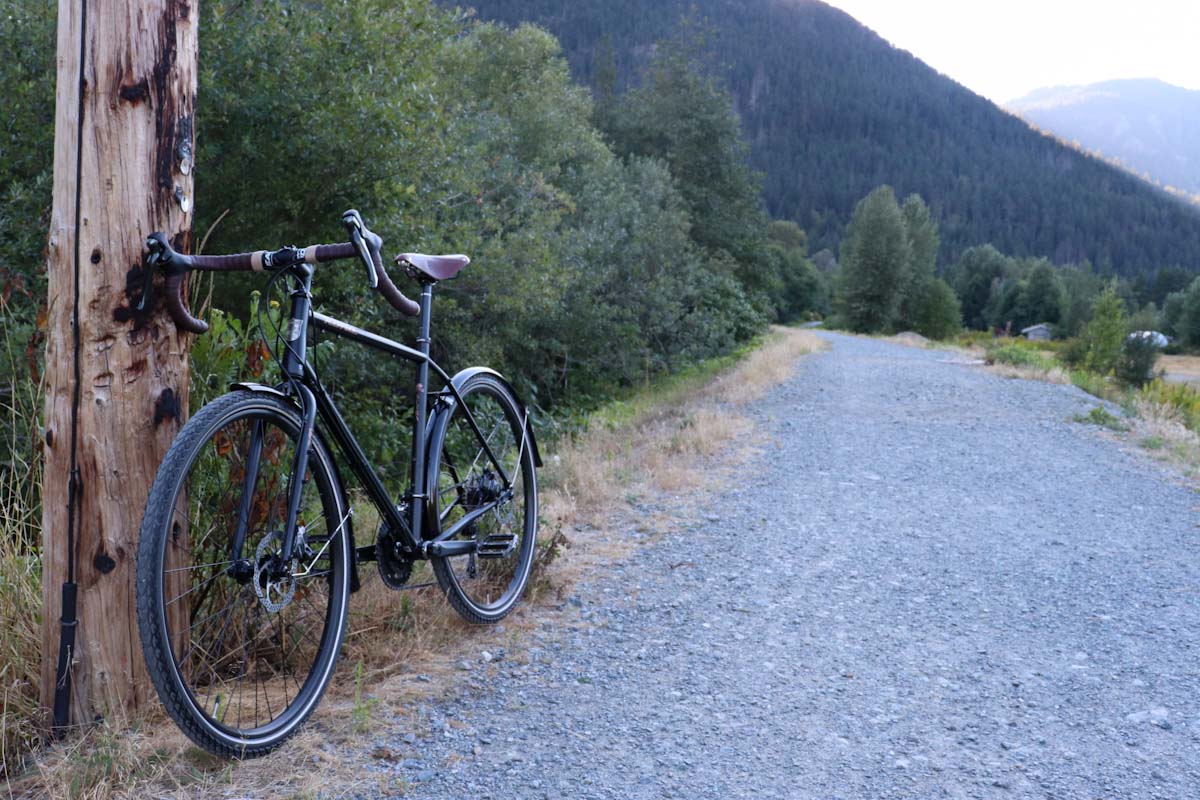Since writing for Bikerumor I’ve been primarily focused on gravity MTB riding. This year though, Kona offered me an opportunity to ride their Sutra touring/gravel/commuter bike. This was my chance to try out gravel firsthand, and while it’s not tempting me to give up on MTB, I truly enjoyed some exploratory rides on the reasonably priced, and capable Sutra.
The main reason I agreed to test the Sutra is because British Columbia has been building a lengthy gravel trail, called the Sea to Sky Trail. The project has been ongoing for the last several years, and it currently ends in my little town. I used this bike to get out and explore sections of the trail, which turned out to be a great experience! The Sutra’s chromoly frame, lean tires and road-like riding position makes for a fast-rolling bike that cruises and climbs comfortably.
Kona Sutra – frame details and key specs:
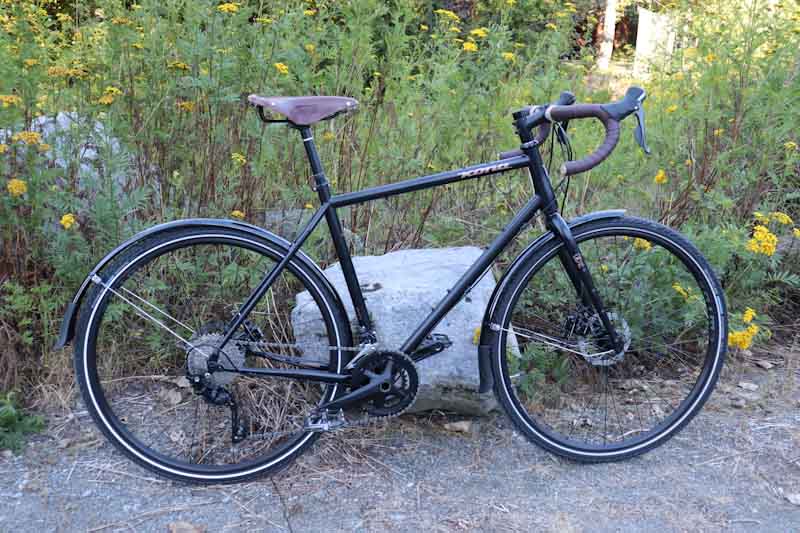
The Sutra’s frame is made from butted chromoly steel, and is matched to Kona’s Project Two Chromoly Disc Touring fork. Frame sizes range from 48-58cm, and at 5’10” I was riding a 54cm. This is what Kona’s online sizing guide suggested, and it definitely felt like the right fit for me.
Kona gave the Sutra thru-axles on both ends, with a 100x12mm front and 142x12mm rear. The 700c wheels come stock with 40c tires, which I found to be an ideal all-terrain width. A 2×10 Shimano drivetrain offers a wide gear range to spin those wheels, and TRP’s mechanically actuated hydraulic disc brakes offer ample power to lock them up. The Sutra’s other fitments include a 27.2mm seat post, and a 68mm bottom bracket.
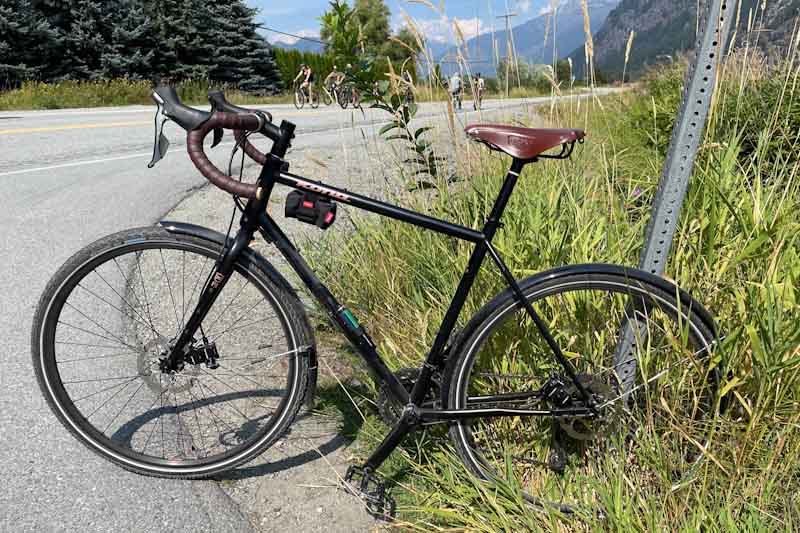
For gravel riding or touring, mounting points are of key importance, and the Sutra is not lacking in this department! There are a multitude of accessory mounts on the top tube, down tube, seat tube and fork, plus fender mounts. I bolted on a pump and a frame bag with a spare tube, tire levers, and a multi tool… and it’s good I did, as I had to change a flat on my second ride!
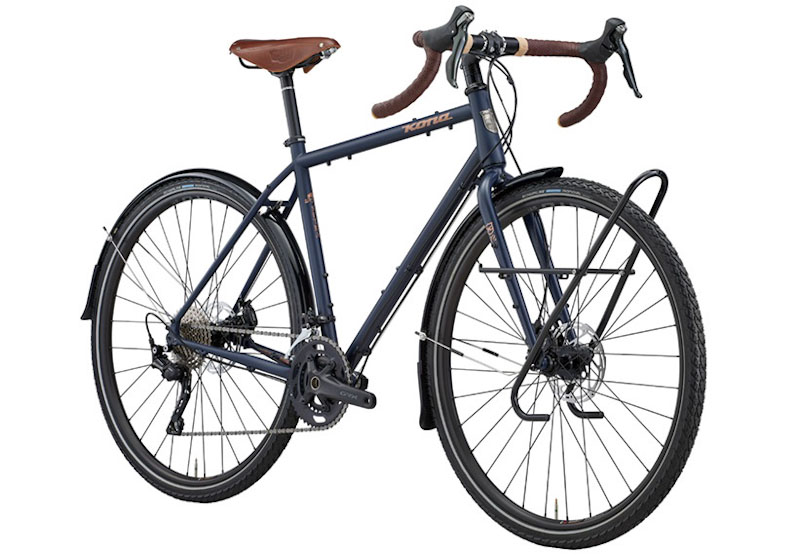
The Sutra is supposed to come with a Tubus Tara Big Apple low-rider front rack, but you’ll notice my demo bike was sent to me without one. Since I’m just getting introduced to gravel riding, I don’t own cargo bags and couldn’t really test the rack anyways, so I wasn’t too fussed about it not being there. Consumers will get the rack included with the bike.
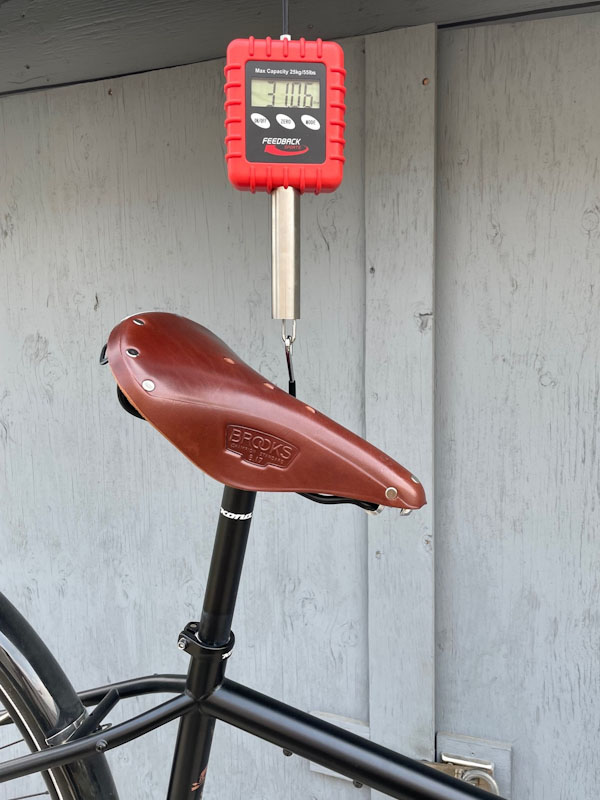
Geometry:
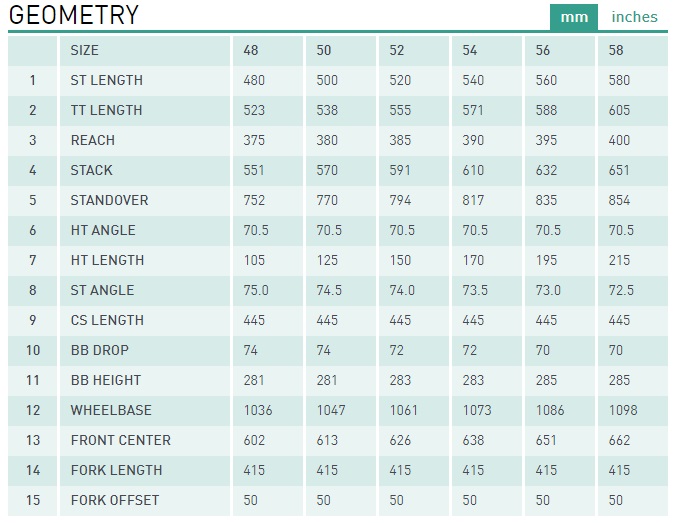
Given this is my first touring/gravel bike experience, I don’t have much basis for comparison as far as geometry goes. All I can say is that the bike seemed to fit me quite well; standover height was bang-on, the 73.5° seat mast angle puts you in a good position for powerful pedalling, and I was comfortable with the reach. I felt low and aerodynamic in the drops, but moving up to the flats offered a very comfortable upright ride position. The hoods provided the most balanced ride, and I spent most of my time there.
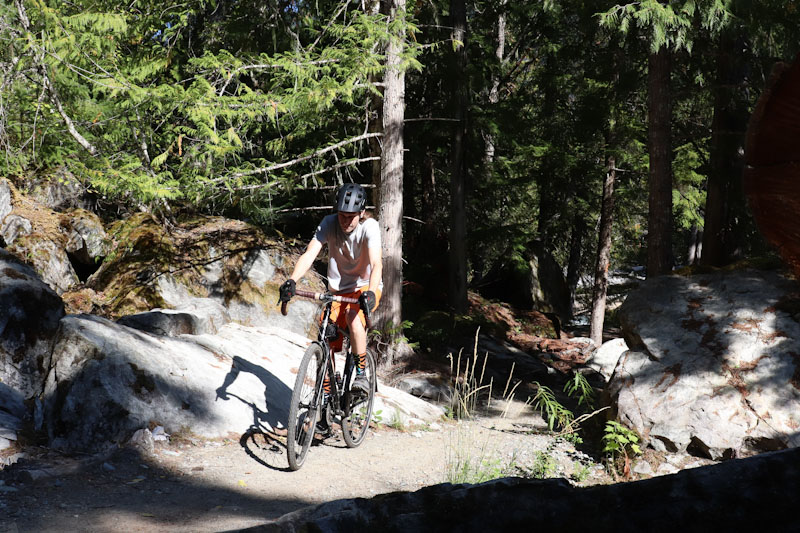
The fork’s steerer tube is pretty long so I left the stem/handlebar on the high side and enjoyed a fairly comfortable riding position. Riders more familiar with a road stance could run the bars much lower than I did. Initially, I found the steering a bit steep and twitchy, but that’s because I’m used to a slack enduro bike with a wide handlebar. The Sutra’s head tube angle of 70.5° is a little slacked-out versus a typical road racing bike.
Ride Impressions:
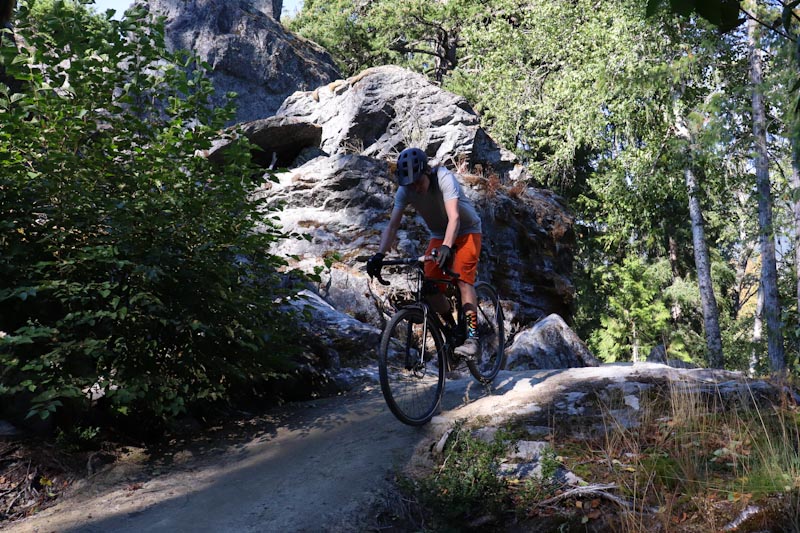
Chromoly was the right choice for this frame, as the mixed-surface trail I explored had some bumpy enough sections to rattle me. I was thankful the frame wasn’t a stiffer aluminum build – I am used to full-suspension bikes so I was glad to have a little compliance from the chromoly frame and fork!
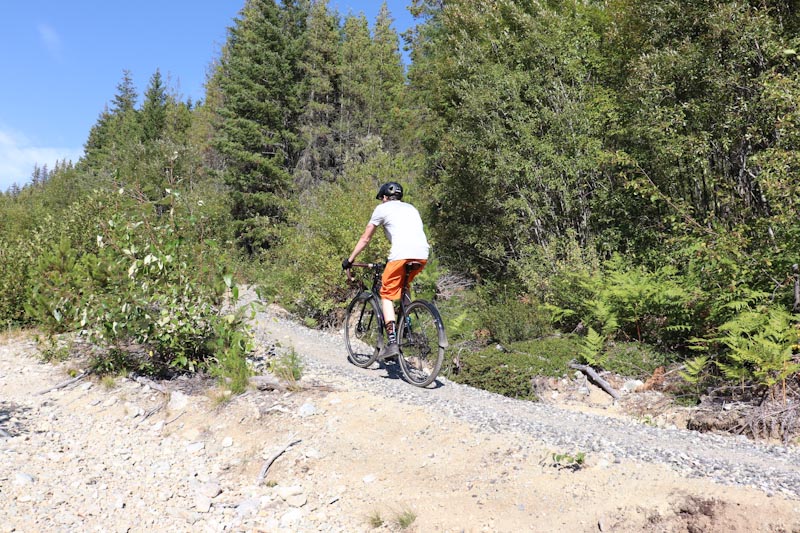
I was pleased to find rear wheel traction on climb sections was better than expected. Whether I was sitting or standing up, that skinny rear wheel had ample weight on it and despite my inexperience, I shot up some steep gravel/dirt sections with no problems. On an early ride, I did nearly crash when my front wheel lost grip around a downhill corner. Gravel tires don’t grab like 2.5” MTB treads, and I probably leaned back a bit too much as I’m not used to descending with drop bars.
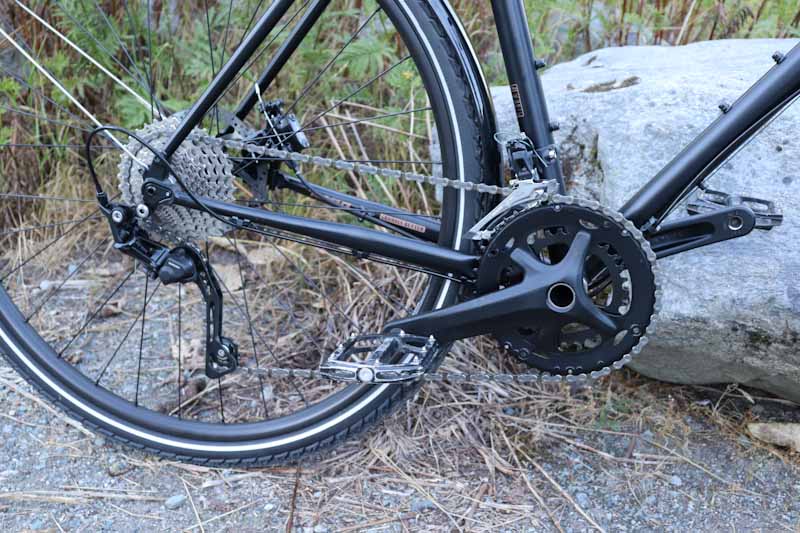
The Sutra’s 2×10 gear range is very good, with the low end proving OK for the Sea to Sky trail’s steeper climbing sections. I found the Shimano Tiagra levers/shifters performed well, and I only missed a few shifts due to my lack of experience with road-style shifting. When I did my job right, both shifters and derailleurs worked reliably.
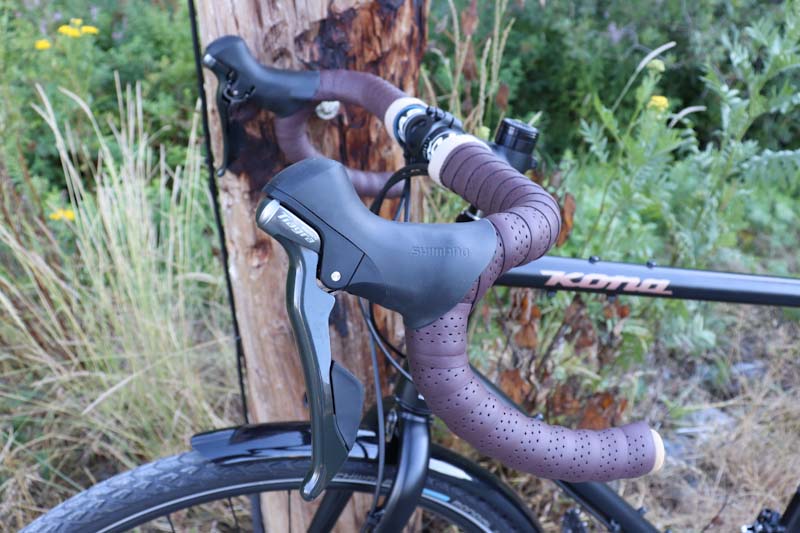
Being used to MTB cockpits, I found the Tiagra brake levers sat pretty far out. I did adjust the reach to bring them in a little, and got them to the point where my fingers could grab them properly.
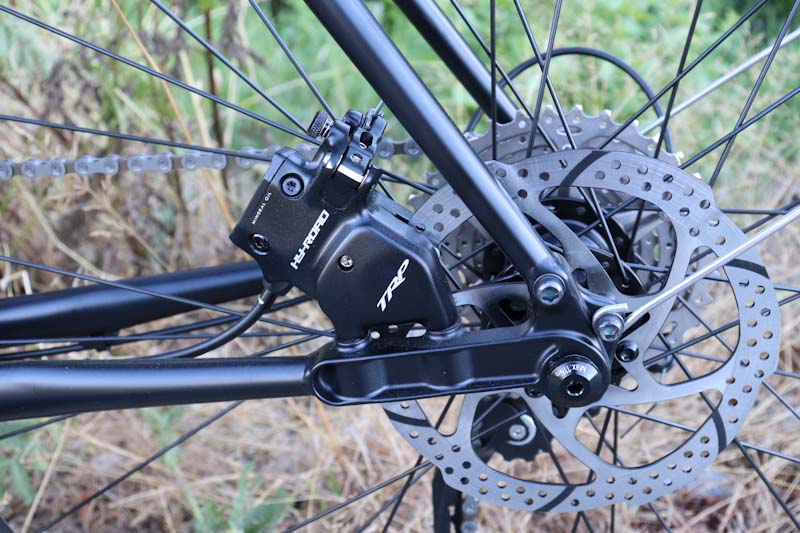
TRP’s mechanically-actuated hydraulic brakes seem hilariously overcomplicated at first, but I get the reasoning behind them and they do perform well. Running cables allows for easy mid-ride maintenance, but the hydraulic calipers (grabbing a pair of 160mm rotors) provide the power you’d expect from hydraulic brakes. They modulate just like hydraulics too, so I was impressed by them.
The Sutra’s WTB ST i23 TCS 2.0 wheels survived my testing just fine, and I did ride more than a few rougher sections of trail. One pinched tube happened pretty early, but I didn’t get any more flats so I have no complaints about the Schwalbe Marathon Mondial tires. They have a nice tread design that’s smooth on roads and grippy enough to dig into softer surfaces.
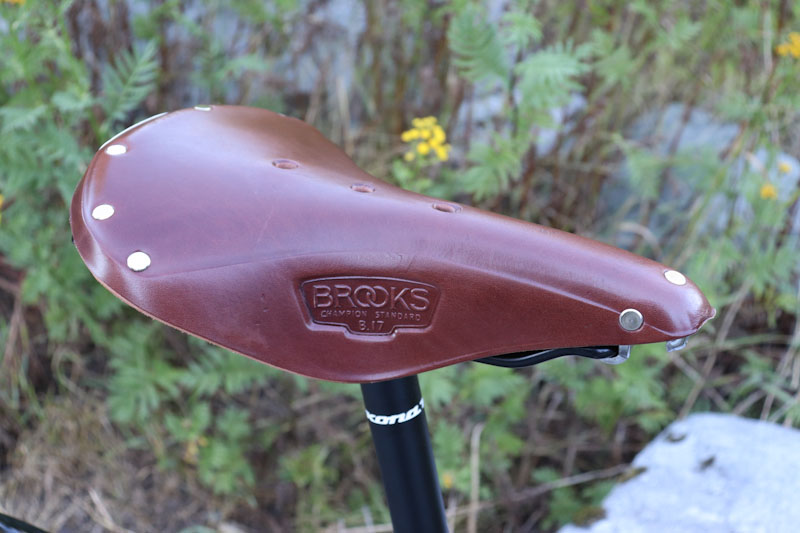
Kona didn’t skimp on the Sutra’s saddle, supplying a Brooks B17. This was my first experience with a Brooks saddle, and I was surprised how stiff it felt initially but did find it pretty comfortable as it got worked in. With no suspension on an all-terrain bike, a quality saddle was a smart inclusion on the Sutra’s build. Brooks also supplies the bar tape, which is thick enough to offer some cushion for your hands.
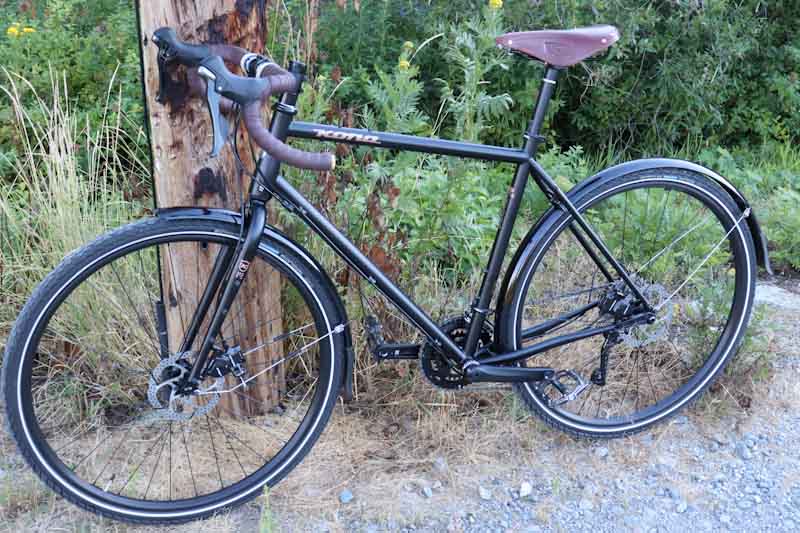
The one component I wasn’t impressed with was the rear fender. The front fender performed just fine, staying in place and never rubbing the wheel even when it was shaking down a rough trail, but the rear was problematic on any bumpy terrain. If you intend to do any off-road rides, you’ll probably find the rear fender isn’t robust enough.
Not only did the thin plastic fender flop around and make a lot of noise when riding rough terrain, the adjustment nuts also slipped out of position more than once during my off-road rides. I was able to re-position the fender once successfully, but after it happened again I gave up and removed it from the bike. I’m certainly no expert with fenders, but there isn’t much room between the tire and the fender’s frame mounts, so you have to get it set up just right to prevent rubbing… and hope it stays there.
Admittedly, the Sutra leans more to the touring side of things than gravel, so it’s not all that surprisng that the fender didn’t work perfectly on rough terrain. But that also highlights the capability of the Sutra – this is a touring bike that is comfortable in many different environments, and could serve as a perfect gateway bike into gravel riding.
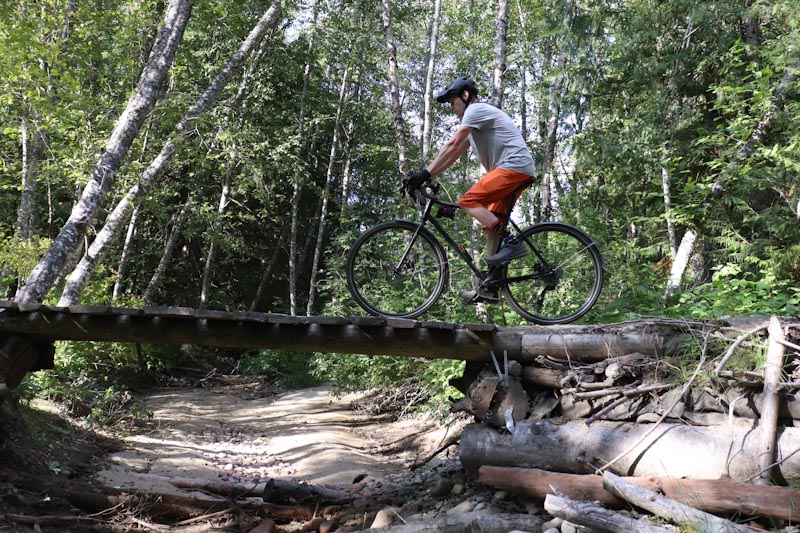
The Kona Sutra comes in Satin Midnight with Gloss Metallic Bronze decals. MSRP is $2099.
